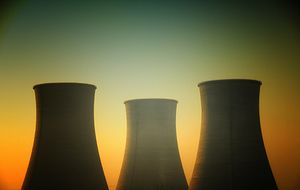A slew of information concerning Japan’s nuclear power facilities has been released in recent days. The most polarizing news surrounded the Fukushima Daiichi Nuclear Power Plant.
The Asahi Shimbun reported that four days after the March 2011 disaster, around 90 percent of the plant’s workers had fled the area despite being told to stay put by the managing director of the plant, Masao Yoshida. Documents obtained by the Asahi Shimbun indicate that Yoshida did not blame most of the workers for leaving, however, while they were gone “white steam was seen spewing out of the No. 2 reactor and a fire occurred at the No. 4 reactor. Radiation levels reached the highest levels near the main gate of the No. 1 reactor.”
Chief Cabinet Secretary Yoshihide Suga declined to comment on the report according to the Japan Times, saying “we don’t know what the Asahi Shimbun has obtained and we can’t say its contents are identical to those the government has.”
Meanwhile, the Jiji Press reported yesterday that one of three Advanced Liquid Processing System units at the Fukushima No. 1 reactor had to be taken offline because calcium levels were higher than normal. Tokyo Electric Power Co. officials have stated that the unit, used to clean radioactive water, will probably not be operational before the end of the month.
As my colleague Ankit has noted before, Prime Minister Shinzo Abe would like to bring Japan’s nuclear capability back online as a large part of his strategy for achieving an economic recovery. An April Reuters analysis suggests that of Japan’s remaining 48 reactors, “14 will probably restart at some point, a further 17 are uncertain and 17 will probably never be switched back on.”
The Jiji Press also reported yesterday that Japan Atomic Power Co. would like to bring its Tokai No. 2 reactor in Ibaraki Prefecture back online, and applied for a Nuclear Regulation Authority safety screening. However, the article states that the reactor does not use flameproof cables, which could be a problem for the NRA in evaluating fire prevention measures.
Reports like this will make it difficult for Abe to bring any of Japan’s reactors back online, especially before summer when peak demand stretches capacity to the limit, and the cost of energy imports soars. Kansai Electric Power Co. Vice President Jiro Kagawa told the Japan News that the company was “able to manage to secure the minimum necessary power supply surplus, thanks to support from other utilities. We virtually [have] no extra power supply.”
The article also states that safety checks have been requested at 17 reactors nationwide in order to bring them back online, yet the inspection schedule is uncertain for all except one reactor at the Sendai plant in Kagoshima Prefecture. However, flawed paperwork submitted by Kyushu Electric Power Co. in April has delayed procedures and could mean that the reactor won’t resume operation until after this summer.
With the distinct possibility that none of Japan’s nuclear reactors will be operating this summer, Abe’s attempt to reinvigorate the economy in June by introducing new structural reforms could face strong headwinds. Another summer of costly energy, combined with stuttering consumption following the tax hike in April, are significant potential drags on Japanese company profits.

































